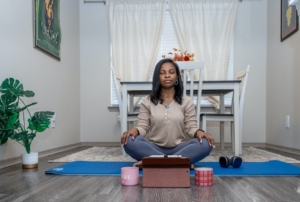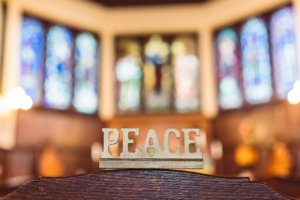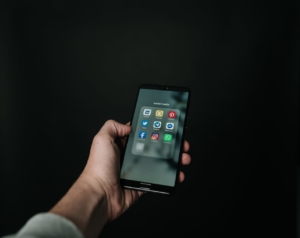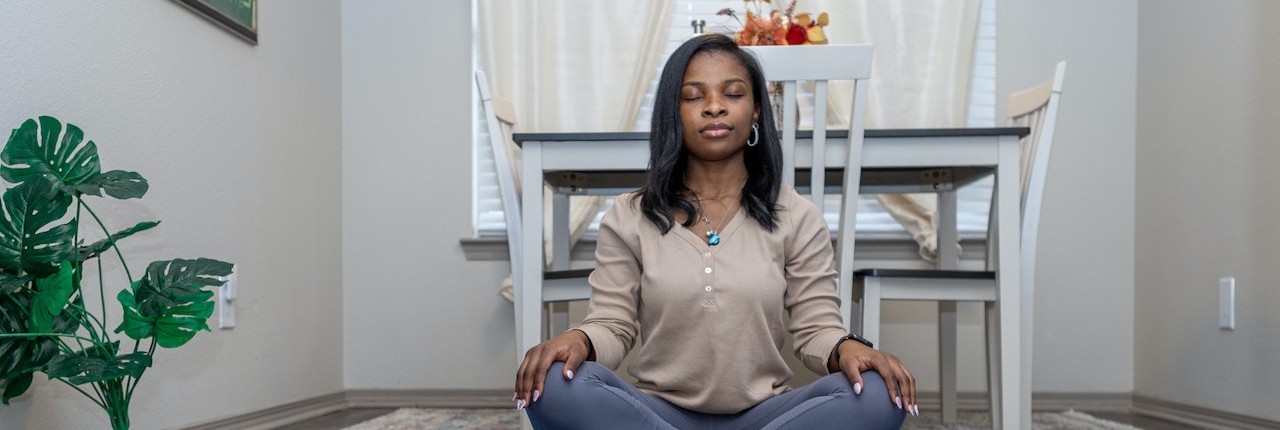The 21st century world we live in is a hectic environment. No matter where you look there is some report or commentary about the state of society and humanity. The worst part of this issue is that it’s inescapable.
 Twenty-five years ago, we all lived in a world where we had to get our news from media sources that were not so readily accessible. Television, newspapers, magazines, and the budding internet were the primary source for knowledge about the dealings of the world. This is not the case today. Santa Monica Christian Counseling can provide guidance on navigating today’s fast-paced information environment and maintaining mental clarity and balance.
Twenty-five years ago, we all lived in a world where we had to get our news from media sources that were not so readily accessible. Television, newspapers, magazines, and the budding internet were the primary source for knowledge about the dealings of the world. This is not the case today. Santa Monica Christian Counseling can provide guidance on navigating today’s fast-paced information environment and maintaining mental clarity and balance.
Media rides around in our pockets almost nonstop. Our electronic devices, namely our cell phones, have become fifth appendages. Have a question you need an answer to? Pull out your phone and Google it. Need directions to a place you’ve never been or even a place you go every day? “Hey Siri . . .?”
There is no escaping the 24-hours news cycle. A huge consequence of all this digital stimulation happens in our emotions. Because it’s so readily available and we cannot escape it, information is causing more and more people across the world to have increasing levels of anxiety.
From minor frustrations to debilitating or chronic panic attacks, digital stimulation is a leading cause of anxiety. Take a look at the following data compiled by the American Psychiatric Association (APA) in October 2020.
At that time, nearly 62% of Americans felt more anxious than they did at the same time a year before. A remarkable increase in the polling samples taken the previous three years, which cited Americans with anxiety to be in the range of 32% to 39% of the population (Connors, 2020).
If you look at the reasons for the drastic increase, digital stimulation is a leading indicator. Family safety (80%), COVID-19 (75%), health (73%), gun violence (73%) and the pending presidential election (72%) were almost equally yet well represented in daily news cycles via television, print media, and social media.
The challenges to controlling anxiety are great without healthy coping skills, professional support, and sometimes even medication support. Because of its mental, emotional, and behavioral natures, anxiety can become a significant challenge for some because it unconsciously develops into the primary coping skill for lack of control, fear, trauma, and phobias.
It can also be a genetic behavior that a person received from a first-line relative such as a mother, father, grandparent, uncle, or aunt.
Methods for controlling anxiety.
Given the prevalence of anxiety, it is important to have some basic ways to manage it, regardless of the trigger. Anxiety should never shape your daily life. It can be overcome and managed if you know the correct or appropriate steps to take. Here is a list of five helpful methods for controlling anxiety as recommended by practicing licensed Christian Marriage and Family Therapists.
Focused breathing/relaxation.
 Anytime an event or matter triggers anxiety to flare up, the goal is to get those emotions under control as quickly as possible. Because anxiety is a natural response to fear or a perceived fear, it immediately impacts our breathing. Taking control of that response is as simple as slowing the moment down.
Anytime an event or matter triggers anxiety to flare up, the goal is to get those emotions under control as quickly as possible. Because anxiety is a natural response to fear or a perceived fear, it immediately impacts our breathing. Taking control of that response is as simple as slowing the moment down.
Take a deep breath. Easier said than done but take a deep breath. Do it like this. Breathe in through your nose. Hold that breath in for five seconds. Finally, exhale slowly through pursed lips. Repeat these steps until you feel yourself calming down.
That could take the form of a slower heart rate, relaxed shoulders, even clearer vision. You will certainly feel that you have regained control of yourself even if the event or issue that triggered the anxiety has not resolved.
A secondary outcome of focused breathing is the sense of relaxation that comes with it. Anxiety makes it hard to relax because the flight, fight, or freeze response is active in the brain. Controlling this response is challenging, yet deep breathing will have an impact on it.
Make deep breathing a part of your daily habits. Spend five to ten minutes per day doing this focused breathing exercise. Do it absent of triggers or anxiety. This could promote the development of a rational automatic response when triggers are activated.
The 3-3-3 rule.
Another helpful method for controlling anxiety is the “3-3-3” rule. Dr. Jacquelyn Johnson, PsyD describes the 3-3-3 Rule for anxiety as a method you can use the moment something triggers you. (Johnson, 2022)
The 3-3-3 rule involves looking around your current environment and naming three things you see, identifying three sounds you hear, and moving or touching three things, such as your limbs or a tangible object. The goal is to focus your attention on something other than what has triggered the anxious response.
Regaining control as quickly as possible is the way to mitigate the degenerative nature of anxiety. The 3-3-3 rule does not necessarily eliminate anxiety, but it does offer a way to ground yourself in the moment. Grounding gives the sense of having a firm foundation to anchor yourself to.
Exercise.
Exercise is likely not a method most people would consider using to control their anxiety. I would agree that in the immediate moments after a triggering event, exercise might not be very effective. However, exercise is a great method to limit anxiety from having impacts on thoughts and emotions.
An article in PubMed says that adults who engage in regular physical activity two to two-and-a-half hours per week experience fewer depressive and anxiety symptoms. (Johnson, 2022)
Without going into great detail, exercise impacts areas of the brain that modulate how you react to stress. Exercise is accessible and easy to engage in. Regularly exercising will help your body fight the physical challenges of anxiety, and it will also give the brain the balance it needs to manage the mental and emotional challenges of anxiety. Consult with your primary care physician on how to incorporate exercise into your physical and mental health treatment.
Journaling.
Throughout this article we’ve learned that anxiety is a condition that can have an impact on our thoughts and emotions. Anxiety takes  over our ability to do the simplest things at times. So, another way to control or manage it that is highly effective is by journaling.
over our ability to do the simplest things at times. So, another way to control or manage it that is highly effective is by journaling.
Journaling is another way to put words to your thoughts. It can be looked at as a mental archive. If one can get the thoughts on paper, then one does not have to allow them to reside within the confines of the mind, causing limitless and debilitating rumination.
In his book, Feeling Good: The New Mood Therapy (Burns, 1999), David Burns provides a journaling technique called the Triple Column Technique. To journal this way, fold a sheet of paper into thirds. On the first third, you write the topic you’re worried about. In the middle third, you identify then write the irrational thought or cognitive distortion associated with the worry. In the third column, you write an alternative or rational response to the worry.
By doing this, you have journaled your concern in a proactive way that allows you to work on a solution. This is just one example. You may be an individual who keeps a detailed diary. This is a journal as well. The goal of journaling is to get the thoughts under control or reduced so that they don’t lead to undue or debilitating anxiety.
Prayer & meditation.
From this writer’s perspective, the most effective method of controlling anxiety is prayer and meditation. Notice it’s not one or the other. This technique is also not a collective. Each has its own role. As a Christian counselor, I believe that sharing your worries with the Lord is a reasonable and rational response to anxiety.
An old African American church saying goes like this: “If you’re going to pray, then don’t worry. If you’re going to worry, then don’t pray.” This sounds fairly simple. I’m certain for some of you, it is not.
The Bible teaches us that worry and anxiety are best managed with prayer. Share with the Lord specifically what is causing you anxiety. Maybe you don’t know what the trigger is. Maybe you experience anxiety with no clear evidence as to what is causing it. Even in these circumstances, praying can bring a sense of support that may not be easy to get to without it.
Once we pray about our anxieties, it’s important to meditate on the sense of relief that comes. The relief or peace may be physiological. It may be psychological. It may be emotional. You may struggle to feel much relief at all, but meditation will allow your mind to remain clear long enough after praying that you will be able to get focused on matters that have been put on the back burner due to anxiety.
Next steps.
 These five methods for controlling anxiety are great because they all give control back to the person who is nervous, overwhelmed, fearful, tense, or restless. When you find a method that is effective, make sure to practice it daily. Also consider pairing methods. Focused breathing while praying and meditating can enhance the experience of anxiety relief. The 3-3-3 Rule paired with a walk or run can promote concentration.
These five methods for controlling anxiety are great because they all give control back to the person who is nervous, overwhelmed, fearful, tense, or restless. When you find a method that is effective, make sure to practice it daily. Also consider pairing methods. Focused breathing while praying and meditating can enhance the experience of anxiety relief. The 3-3-3 Rule paired with a walk or run can promote concentration.
No matter if you use one method solely, pair methods, or all of them work, remember that anxiety is not an existence that you have to tolerate. If anxiety is out of control in your life, it may be most prudent to seek support from a local therapist or talk to your primary care physician about medication support.
Philippians 4: 6-7 says, “Do not be anxious about anything; instead, pray about everything. Tell God what you need and thank him for all he has done. Then you will experience God’s peace, which exceeds anything we can understand. His peace will guard your hearts and minds as you live in Christ Jesus.”
The Passion Translation of 1 Peter 5:7 says, “Pour out all your worries and stress upon him and leave them there, for he always tenderly cares for you.”
Both of these Scriptures point to sharing how you feel with the Lord. Once you’ve done this, you will experience relief. Most specifically, you’ll experience peace. The bottom line of anxiety is that it does not have to be a private journey. The Lord is waiting for you to pour everything that worries you out on Him. A mental dump is sometimes just what the mind needs to get to a place of peace. You can also reach out to a counselor at Santa Monica Christian Counseling for additional support in navigating anxiety with faith and guidance.
Feel free to reach out to me or one of the other counselors in our online counselor directory if you’d like additional support.
Resources:
Anderson, E. a. (2013, April 23). Effects of Exercise and Physical Activity on Anxiety. Retrieved from National Library of Medicine: https://www.ncbi.nlm.nih.gov/pmc/articles/PMC3632802/
Burns, D. (1999). Feeling Good: The New Mood Therapy. New York: William Morrow.
Connors, E. (2020). New APA Poll Shows Surge in Anxiety Among Americans Top Causes Are Safety, COVID-19, Health, Gun Violence, and the Upcoming Election. Washington, DC: American Psychiatric Association.
Johnson, J. a. (2022, July 28). What Is the 333 Rule for Anxiety? Retrieved from Healthline: https://www.healthline.com/health/333-rule-anxiety
Photos:
“Yoga”, Courtesy of Adedoyin, Nappy.co, Public Domain; “Peace”, Courtesy of RDNE Stock project, Pexels.com, CC0 License; “Smiling Girl”, Courtesy of Alena Shekhovtcova, Pexels.com, CC0 License; “Smartphone”, Courtesy of Magnus Mueller, Pexels.com, CC0 License


